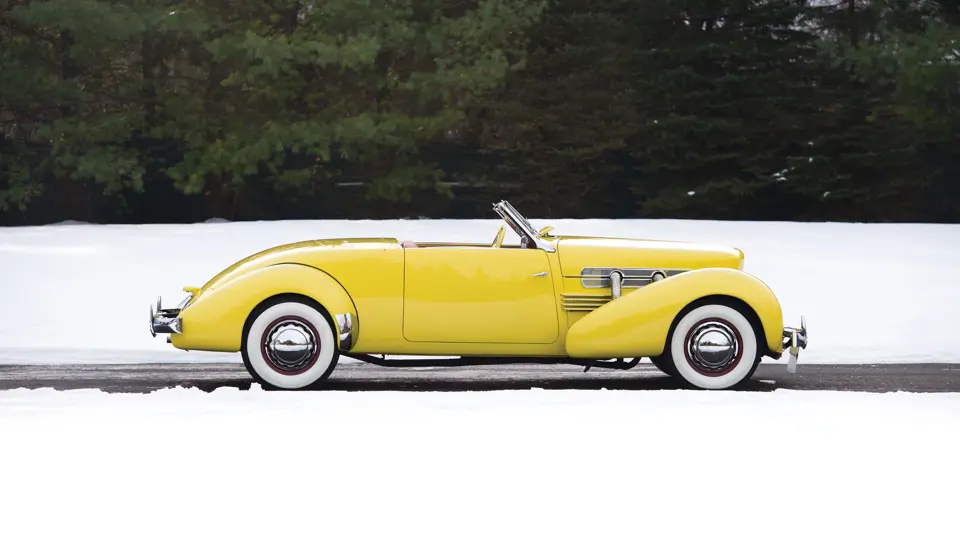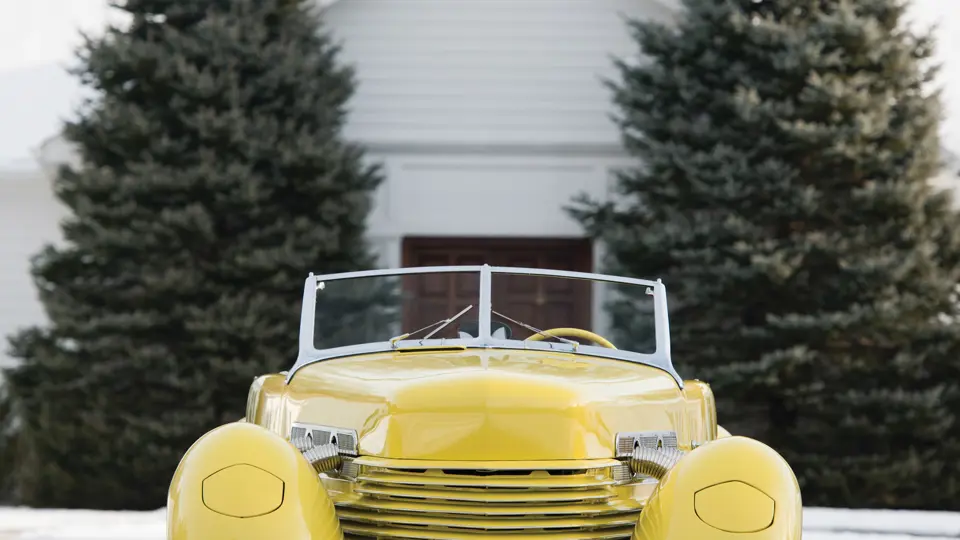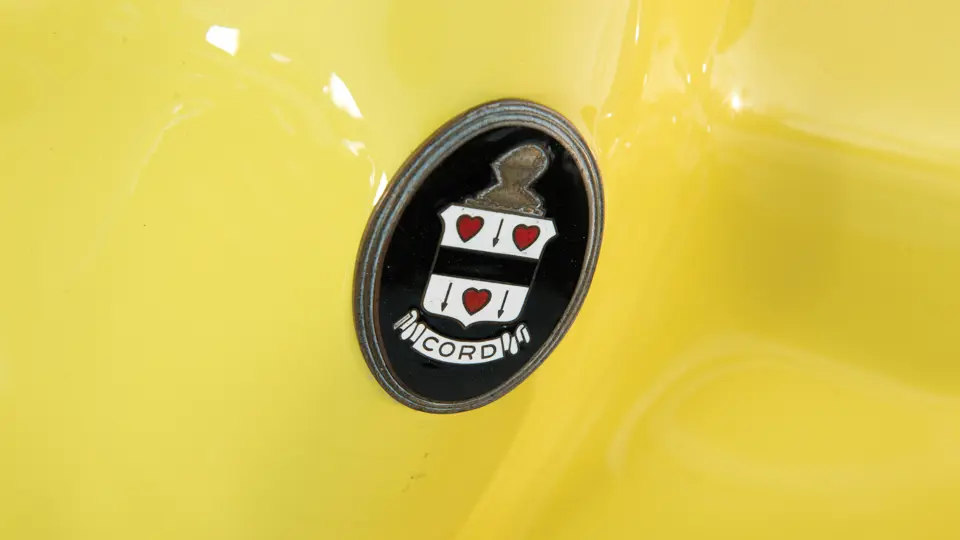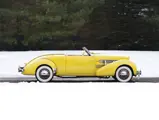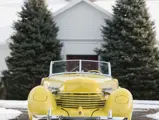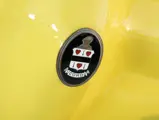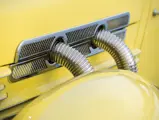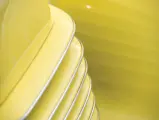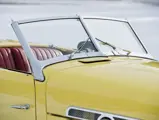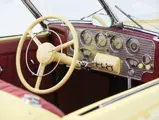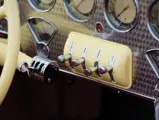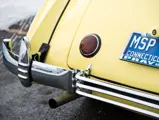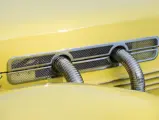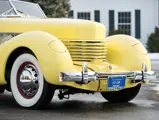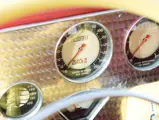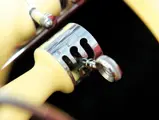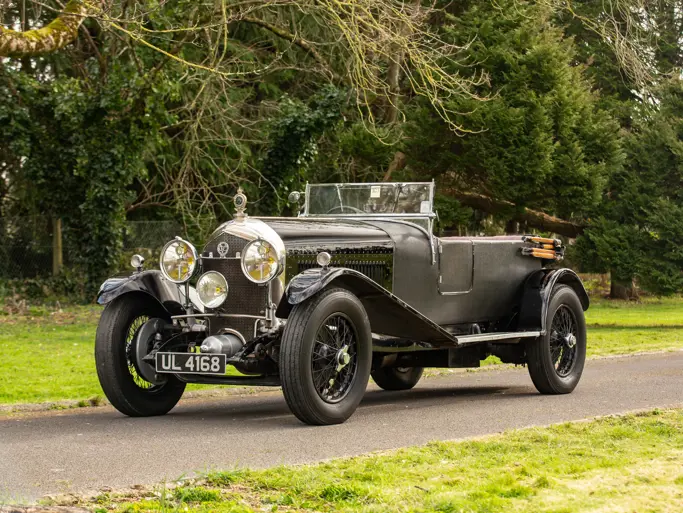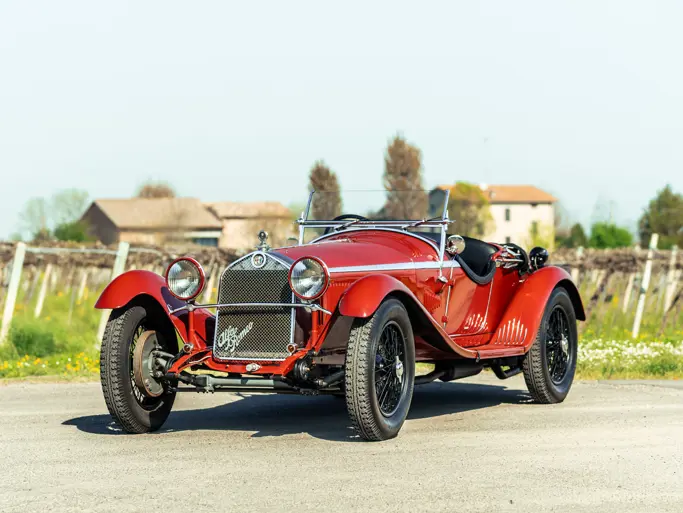190 bhp, 288 cu. in. supercharged L-head V-8, four-speed pre-selector manual transmission, independent front suspension, rear semi-elliptic suspension with leaf springs, and four-wheel hydraulic brakes. Wheelbase: 125 in.
In his patent application, designer Gordon Miller Buehrig described the “New Cord” of 1936 as being a “new, original, and ornamental design for an automobile.” That was a classic understatement.
The Cord boasted extremely aerodynamic “coffin nose” styling, with a louvered hood that lacked a traditional radiator shell and headlights hidden in the curve of the front fenders. Unitary body construction and a “step-down” floor predated the Hudson that made those features famous by a dozen years. The door hinges were hidden, and there were no running boards, because the Cord did not need them. The front-wheel drive lowered it several inches below other American automobiles, and driving those front wheels was a powerful Lycoming V-8, which was mated to an advanced electrically shifted pre-selector transmission.
Unfortunately, production delays carved into the beautiful machine’s sales, dooming it to a run of only two years. Survivors, however, have been prized by knowledgeable enthusiasts ever since the last Cord came off the line in Indiana. None are more treasured than the sportiest model: the two-passenger convertible cabriolet with its distinctive disappearing convertible top. Most prized are the cabriolets fitted with supercharged “FC” engines, as their 190 horsepower enabled a top speed of over 100 mph. Surviving supercharged cabriolets figure into the world’s finest automobile collections.
The Cabriolet offered here has been part of the Pray Collection since 2001, when it was acquired from Carlos Dominguez, of Palm City, Florida; additionally, earlier owners are known to have included the Blackhawk Collection. This original, genuine Cabriolet was a 1936 model that remained leftover in dealer stock at the end of the year, so it was renumbered as a 1937 by the factory. The records of Cord historian Ron Irwin indicate that the car was originally built with a normally aspirated engine and that the present supercharged engine, FC 2133, was installed later in life, as is common with these cars.
While in Mr. Pray’s care, the Cord has undergone significant cosmetic and mechanical work, which was performed by the Pray Body Shop, and the most recent of which was completed in 2012. This work included the replacement of the radiator core, a rebuild of the exhaust system, and the installation of a new red leather interior and new black carpet, as well as the replating of some chrome.
The brightened hue of the factory Cigarette Cream, also commissioned by Mr. Pray, has only minor orange peel, and it would be enhanced by an adjustment of the doors. In fact, the car has enjoyed showings at occasional concours events in recent years, most prominently in Mr. Pray’s hometown of Greenwich. The indicated mileage of 999 is believed to have been covered since restoration.
Gordon Buehrig’s favorite quote about his design came from an anonymous admirer: “It doesn’t look like a car. It looks like a beautiful thing that was just born and grew up on the highway.” The Pray Collection’s Cord 812 Cabriolet is the embodiment of that beauty.
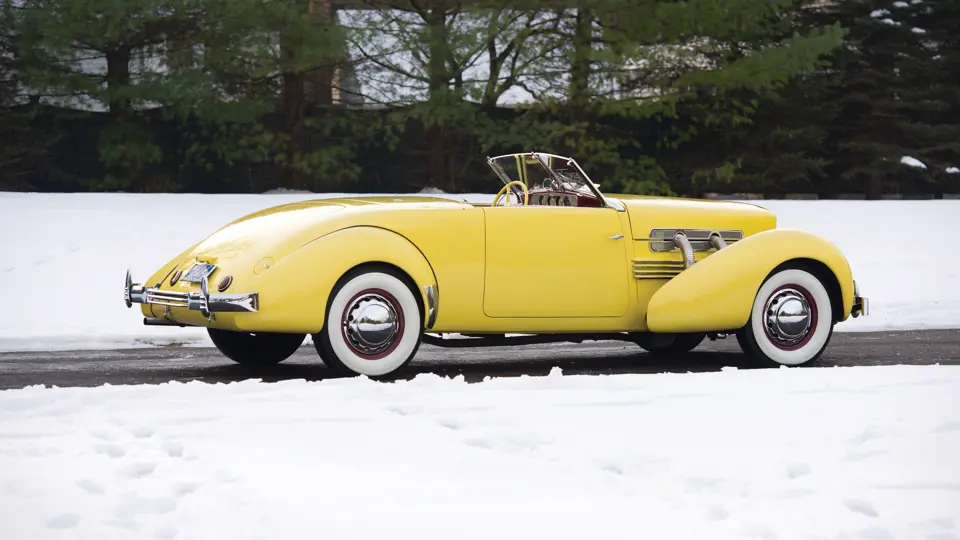



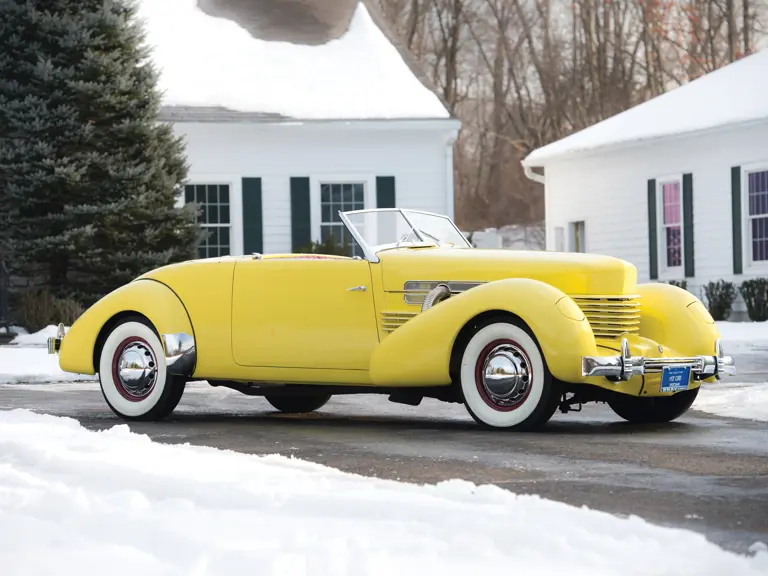
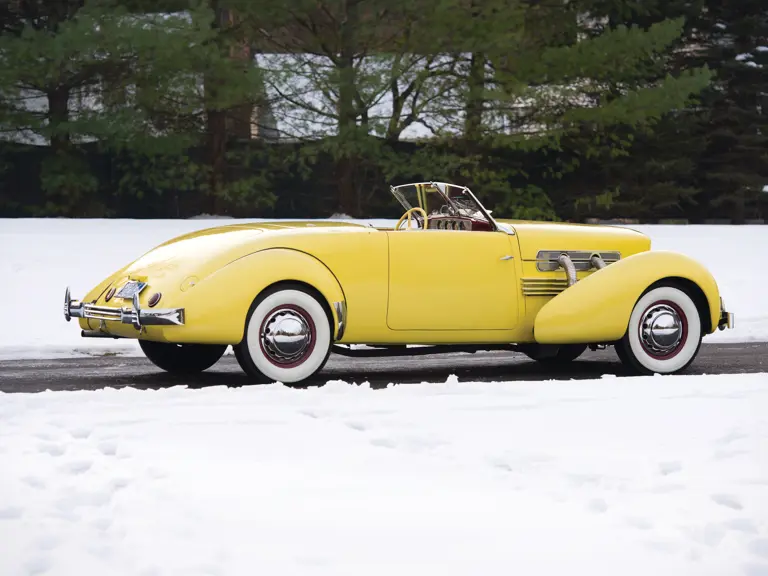
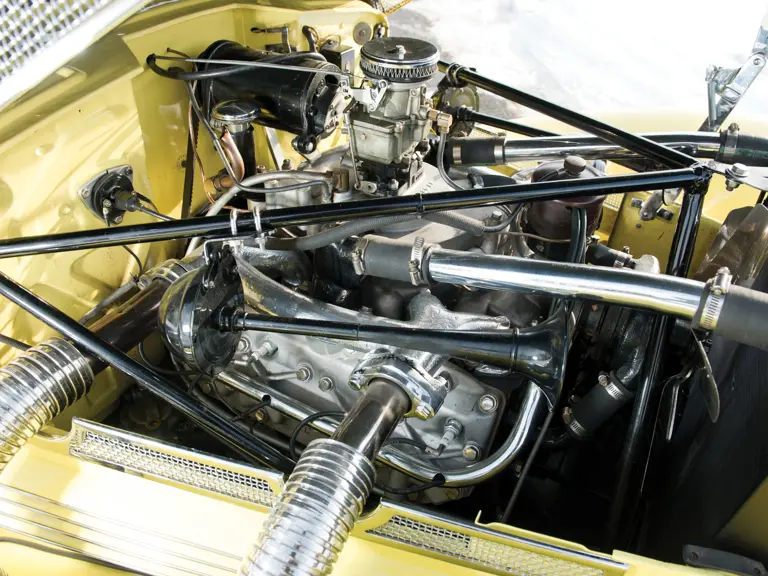
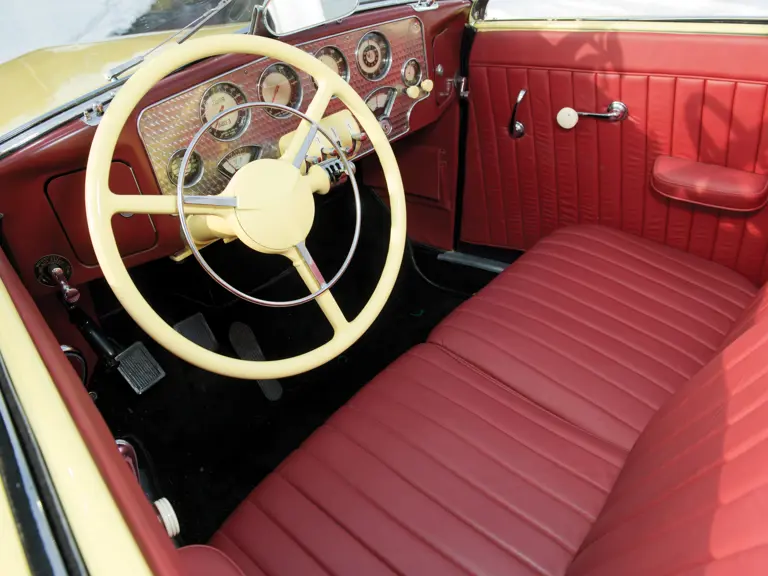
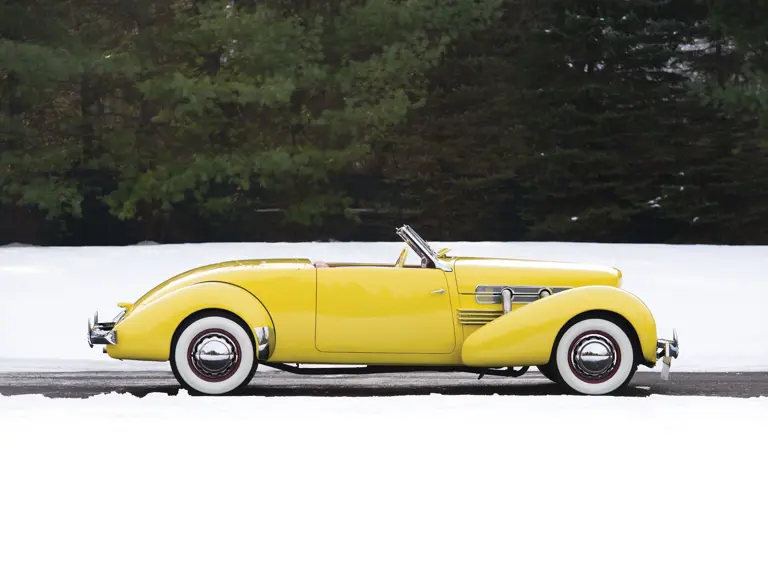
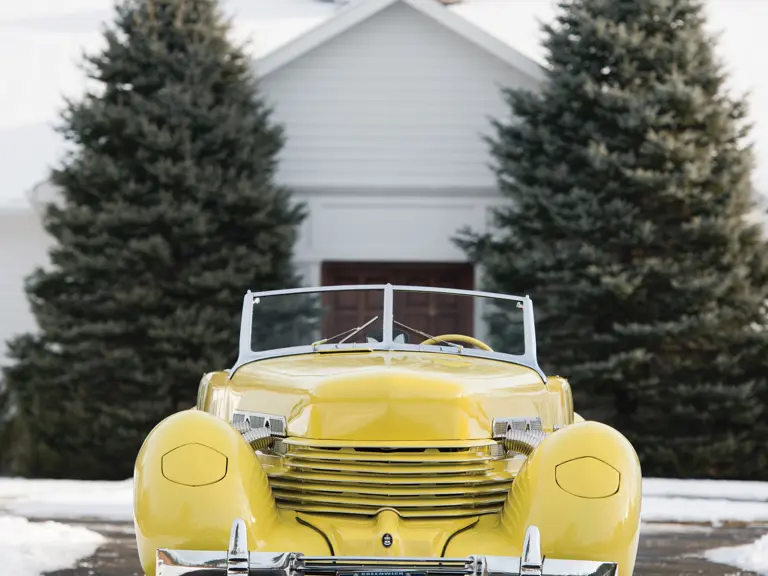

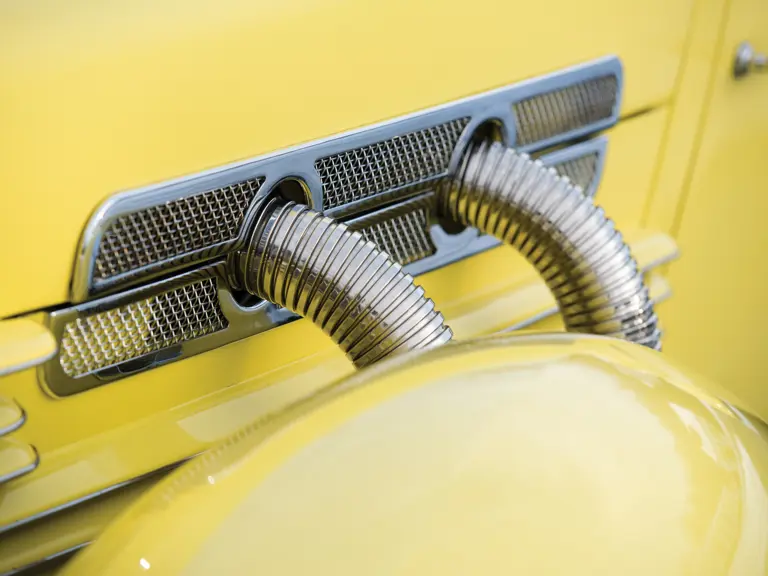


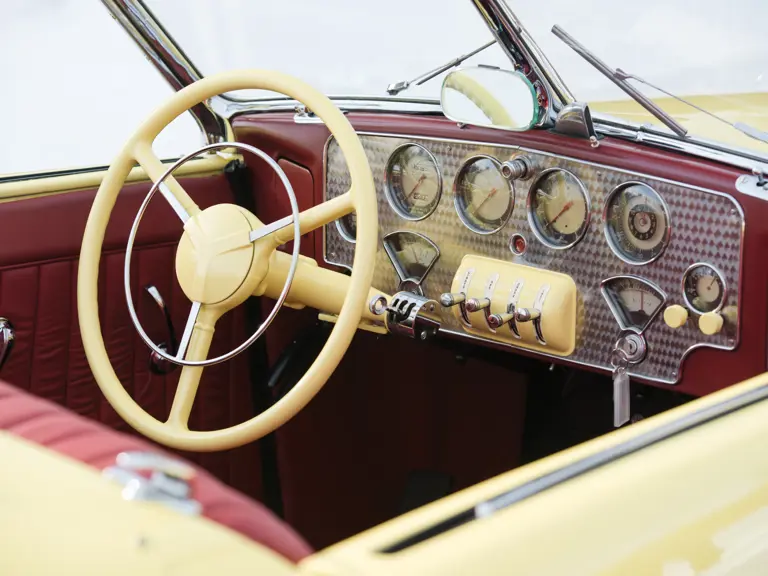
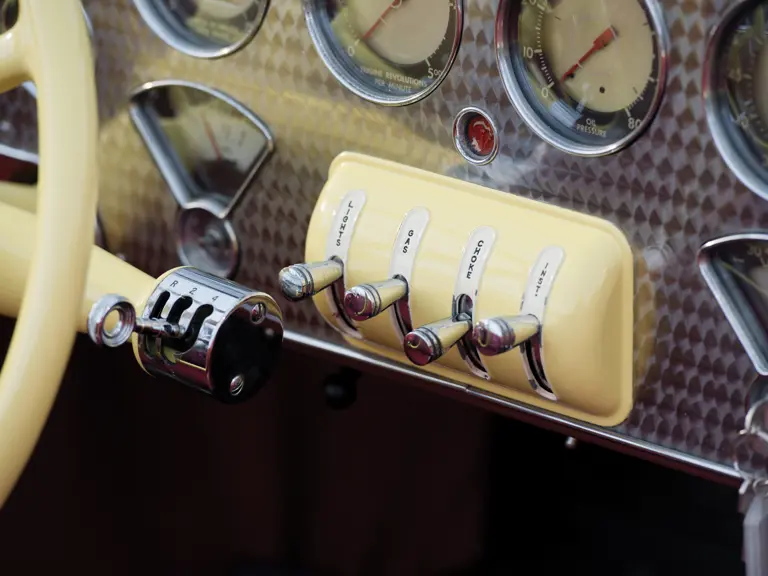
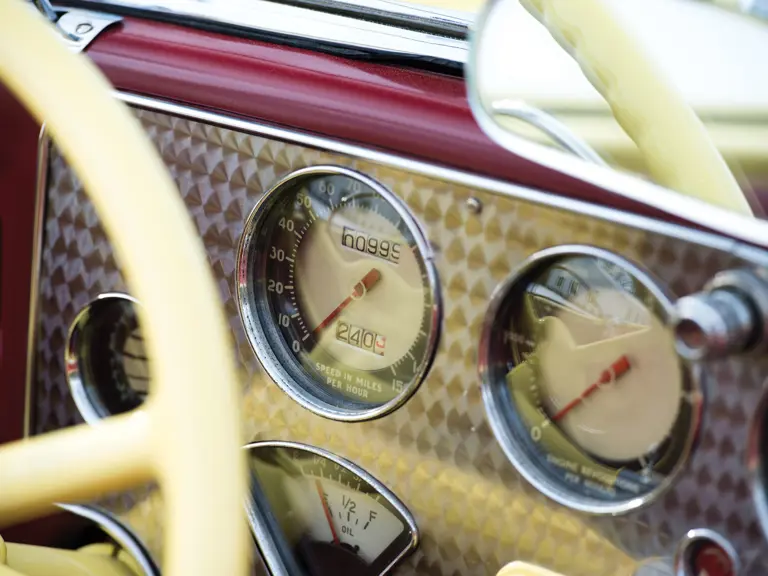
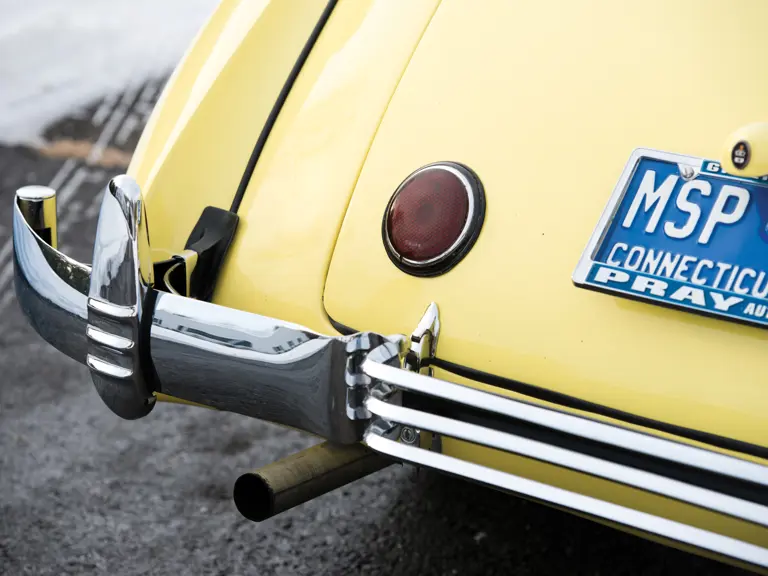
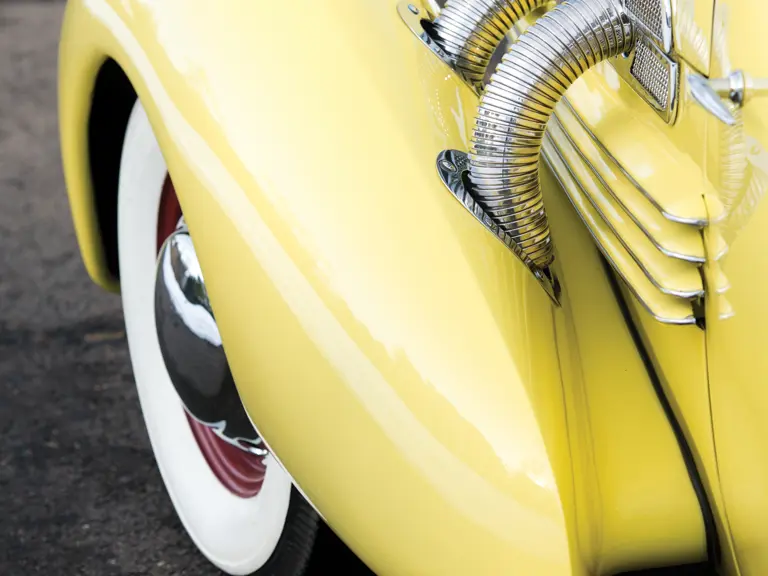
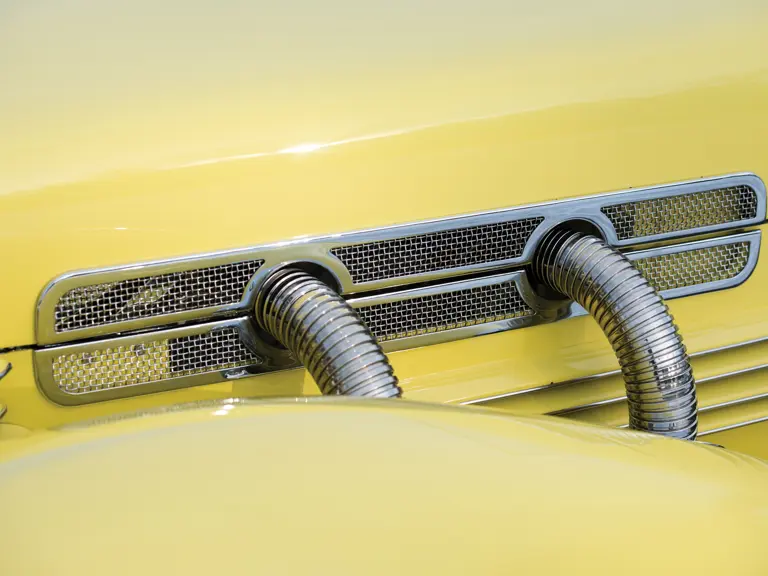
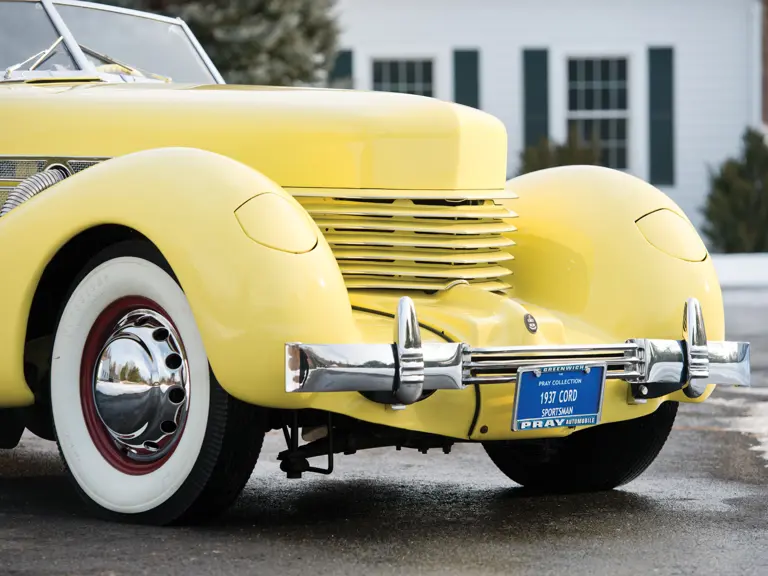
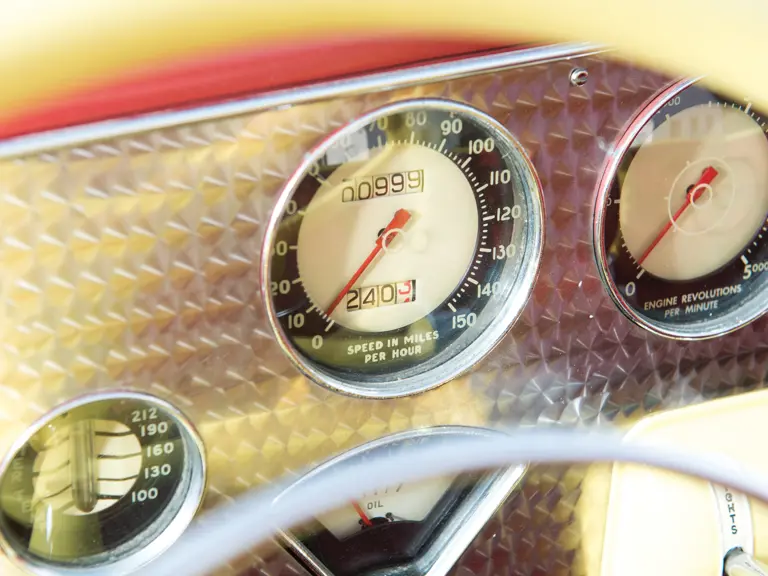
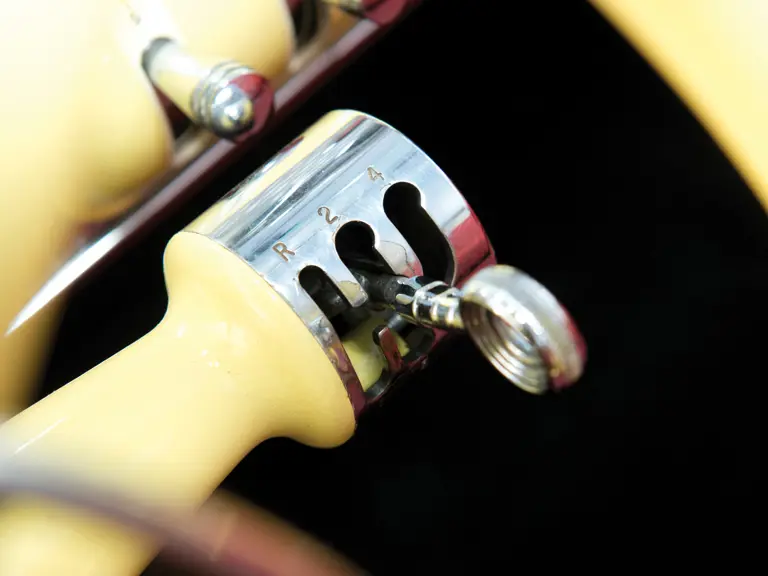


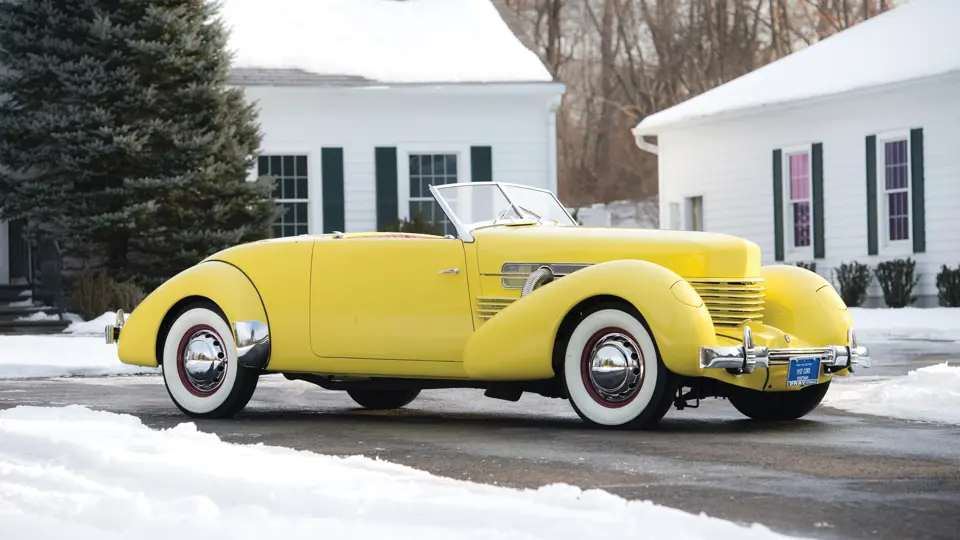
 | Amelia Island, Florida
| Amelia Island, Florida
